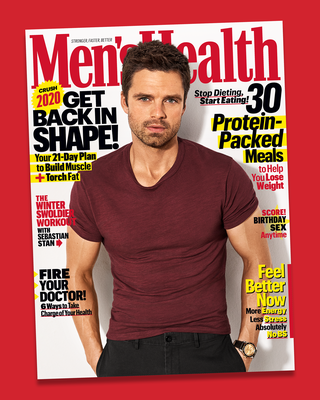Online fitness coach Matt Kido just posted a video to the Gokuflex YouTube channel explaining exactly how one of his clients, Florencio, was able to get ripped by building consistency and forming habits.
While a lot of YouTube fitness challenges tend to cut off at the one-month mark, and Matt’s transformation videos usually span 10 or 12 weeks, Florencio wanted to take his training further. The pair instead tracked Florencio’s progress over a six-month period—which Matt feels gives a realistic depiction of the time and effort it takes to achieve substantial changes in real life.
The first thing Florencio did was reduce his calorie intake, and get into the habit of counting macros, with 275 calories from carbs, 55 grams of fat, and 190 grams of protein. The first month’s training plan consisted of three workouts per week, starting with cardio followed by squats, bench press, deadlifts, and overhead press.
“With this first month, we’re just acclimating and seeing how his body works, seeing where his metabolism is at, seeing how his body reacts to different macros, increasing cardio, that kind of stuff,” says Matt. He only lost one pound during the first month as he was “building that consistency, learning to track macros, getting used to working out consistently.”
In the second month, Florencio reduced his carbs and fat while he increased his protein intake, which is essential for building muscle. He also went up to four workouts per week, including a HIIT session. While his squat and bench press remained the same, he increased the weight he used in his deadlift. His overhead press, however, dropped, while he worked on his form. That’s a smart choice, especially with shoulder exercises—you should always focus on doing the movements properly before trying to push heavy weight.
“You can gain strength at the beginning of a cut, but as you get deeper and deeper, strength will eventually fall as you lose that mass, the harder it will be for you to get stronger,” Kido explains. “It’s the byproduct of being in a calorific deficit, and we just do our best to work around it.” By month three, Florencio’s lifts were improving: “As you continue to practice your lifts, your body just gets more efficient at them.”

Subscribe to Men’s Health
hearstmags.com
SHOP NOW
By month four, Florencio was squatting, benching, and deadlifting more weight. In the fifth month, he added an extra gym session and HIIT workout to his routine.
After four months of continually reducing his macros in small increments, he kept them at the same level for the remainder of the challenge, as he had adjusted to the diet by this point.
At the start of his journey, Florencio weighed 188 pounds. Six months later, he weighed 162.5 pounds; that’s an average loss of 1 pound a week for the whole six months.
“Slow and steady always wins the race,” says Matt. “When you look at the big picture you see massive changes, but when you break it down to the weeks, all you see is him losing 1.1 pounds every single week. Break it down to the days, he’s just hitting his macros, his cardio sessions and working out, just doing it consistently over a long period of time. That’s as simple as fitness is, and that’s as simple as life is, really.”
We don’t recommend that you follow this particular plan if you want to make your own transformation—you should aim for something more tailored to you. Make sure that you find a reputable nutritionist to help determine the best macro split for you (if counting them is the way you decide to go), and try to work with a trainer or using workouts from Men’s Health to stay active.
Source: Read Full Article
